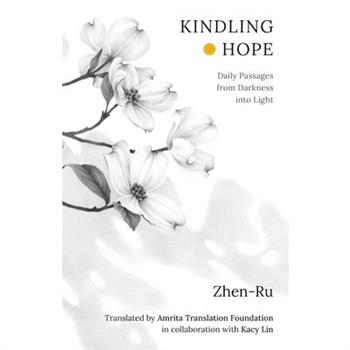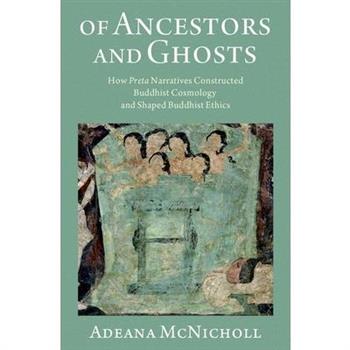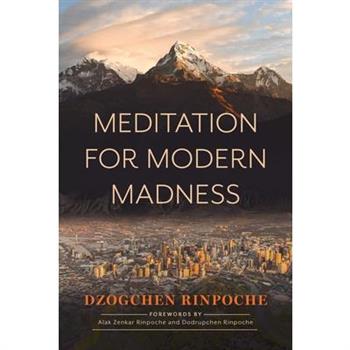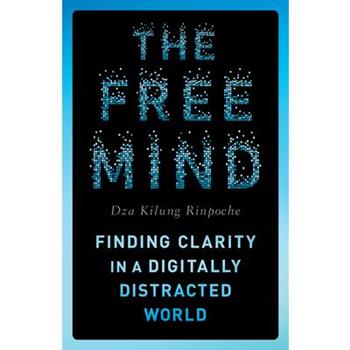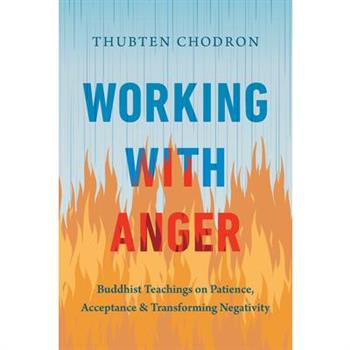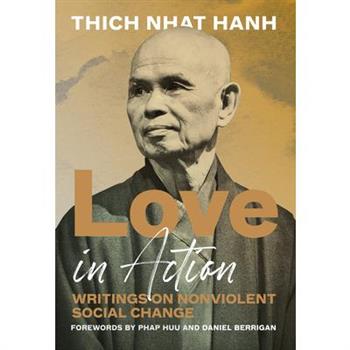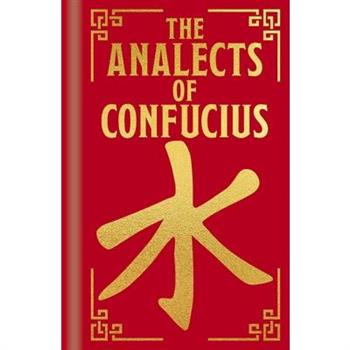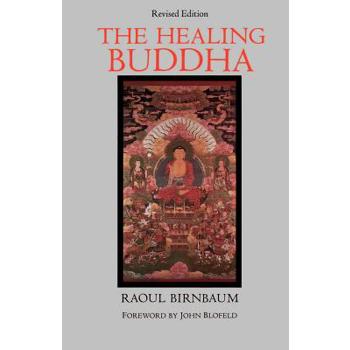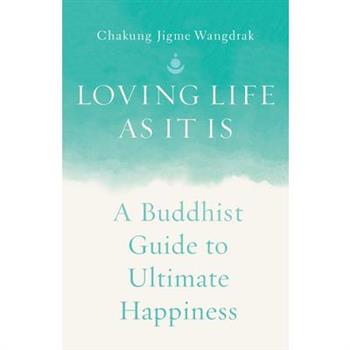Nyingma: Mahayoga, Anuyoga, and Atiyoga, Part Two
A collection of texts and commentaries from the Nyingma tradition of Tibetan Buddhism on Dzogchen, or Great Perfection teachings, which introduce us to our most basic nature--the clear and pristine awareness that is the nature of the mind. The Treasury of Precious Instructions, compiled by Jamg繹n Kongtrul Lodr繹 Taye, one of Tibet's greatest Buddhist masters, is a shining jewel of Tibetan literature, presenting essential teachings from the entire spectrum of practice lineages that existed in Tibet. In its eighteen volumes, Kongtrul brings together some of the most important texts on key topics of Buddhist thought and practice as well as authoring significant new sections of his own. Teachings and practices of the Nyingma lineage, the first of the eight lineages, are presented in the first and second volumes of the series, the second one of which is translated here. These texts are all related to the three yogas: Mahāyoga, Anuyoga, and Atiyoga. The first Nyingma volume includes works that are representative of the first two yogas, while this volume focuses especially on those belonging to the "pith-instruction class," specifically those related to the unsurpassed secret section--the Heart Essence, or Nyingtik. According to the understanding of the Nyingma school, the most profound tenet of the Buddha's teachings is that within the mind of every being--as its bedrock, fundamental stratum, or element--lies the buddha nature. The teachings of this volume each present this essential tenet in a variety of ways and are composed by various Tibetan and Indian masters, including the Buddha, Garab Dorje, Ma簽juśrīmitra, Śrīsiṃha, J簽ānasūtra, Padmasambhava, Longchen Rabjam, and Jamgon Kongtrul Lodr繹 Taye.
Tibetan Wisdom
���� **Discover the Wisdom of Tibetan Buddhism: Karma, Meditation, and Sacred Symbols** ����Are you ready to embark on a transformative journey into the heart of Tibetan Buddhism? Whether you're a seasoned practitioner or just starting to explore Buddhist teachings, this comprehensive book bundle is the perfect guide to deepen your understanding of karma, meditation, and the sacred symbols that define this rich spiritual tradition. Dive into the wisdom of Tibetan Buddhism with *Karma, Meditation, and Sacred Symbols*, a four-book collection designed to offer insight, practice, and spiritual growth. ����✨���� **Book 1: The Path of Compassion: Teachings on Bodhisattva Practice** Compassion lies at the heart of Tibetan Buddhism, and in *The Path of Compassion*, you'll discover the profound teachings of the Bodhisattva path-a life dedicated to the service of all beings. Learn how to cultivate compassion in your daily life, develop patience, and nurture a heart that seeks to alleviate suffering wherever it is found. ���� This book will guide you in living with kindness, transforming your relationships with others, and embodying the virtues of a Bodhisattva.���� **Book 2: The Wheel of Life: Understanding Karma and Rebirth** Unlock the mysteries of karma and samsara with *The Wheel of Life*. ���� This book offers a clear and accessible explanation of how our actions shape our lives, future rebirths, and the cycles of existence. Dive into the wisdom of the Four Noble Truths and the Noble Eightfold Path, learning how to break free from the cycles of suffering and live a more meaningful, intentional life. Whether you're curious about the deeper aspects of karma or want to understand how your actions today affect your future, this book has the answers.���� **Book 3: The Art of Meditation: Tibetan Techniques for Inner Peace** Discover the ancient meditative practices that bring calm, clarity, and spiritual awakening. ����♀️ In *The Art of Meditation*, you'll explore Tibetan techniques such as *shamatha* (calm abiding) and *vipassana* (insight meditation), designed to quiet the mind and open the heart. Whether you are seeking inner peace or deep spiritual insight, this book provides a practical guide to meditation that is rooted in centuries of tradition but relevant for today's world. ����♂️ Learn how to build a lasting meditation practice that can transform your daily life.���� **Book 4: Deities and Symbols: The Mystical World of Tibetan Buddhism** Step into the mystical and symbolic world of Tibetan Buddhism with *Deities and Symbols*. This book unveils the deeper meanings behind the deities, rituals, and sacred objects that play a central role in Tibetan Buddhist practice. From the compassionate Avalokiteshvara to the fierce protector Mahakala, you'll gain insight into how these sacred figures guide practitioners on the path to enlightenment. ���� With this guide, explore the rich symbolism of mandalas, mudras, and other sacred objects, learning how these tools are used to focus the mind and deepen spiritual practice. ����✨���� **Order Now and Begin Your Journey** ���� This bundle is a perfect companion for anyone seeking spiritual growth, deeper understanding, and personal transformation through the timeless wisdom of Tibetan Buddhism. Start your journey today, and discover the path to inner peace, wisdom, and compassion. ��������
Postponement in Perpetuality: The Buddha’s Prophecy of the End of Buddhism and Its Transmission in East Asia
The Buddha prophesied that his teachings would vanish a few hundred years after his passing, creating an existential dilemma for Chinese Buddhists on the brink of Buddhism's disappearance. This book examines the origins of this prophecy and the famie 法灭 ('end of Buddhism') belief in Indian and Central Asian Buddhism, and the centuries-long struggle of Chinese Buddhists to interpret and adapt this prophecy. This resulted in the unique East Asian Buddhist belief of mofa 末法 ('the final age of Buddhism'), which profoundly influenced medieval China and Japan.
A Garland of Immortal Wish-Fulfilling Trees
A comprehensive explanation of the extraordinary Palyul tradition in which the Mahamudra ("Great Seal") and Dzogchen ("Great Perfection") traditions and the kama and terma lineages are joined together Palyul Namgyal Changchub Ch繹ling, one the six Great Secret Nyingmapa mother monasteries in Tibet, has for centuries upheld the extraordinary non-dual teachings of the Great Seal and Great Perfection traditions. Featuring captivating portraits of the Palyul lineage's throne holders, along with its history and continued preservation, A Garland of Immortal Wish-Fulfilling Trees traces the succession of the tradition's leaders and reveals the source of its dharma lineage found in kama, terma, and pure vision. It also includes: An introduction to the Palyul tradition by Penor RinpocheBiographies of Karma Chagmed Rinpoche and Vidyadhara Migyur DorjeAnd appendices detailing the Nyingma tradition and the major and minor branch monasteries of the mother Palyul
Hard Zen, Soft Heart
Most of us live our whole lives either in the past or in the world of future expectations. We become the puppets of automatic reactions created by past experience, and while we continue to hope and dream of a better future, somehow we end up in the same old muddle.Yet life becomes an endless meditation when we make a conscious decision to live in the present. Every act becomes a reality."Hard Zen, Soft Heart" teaches you how to acknowledge and change styles of reactive behavior which are no longer useful so you can live in the endless meditation of the present.This Is The Afterlife. So What Are You Waiting For?
Kindling Hope
As humans we have the exceptional abilities to learn and to choose. This book is filled with insight and encouragement: to be kind, to be ethical, to be forgiving, to be loving. A slight shift in perspective takes us from despair to hope; a slight alteration in outlook, and the world changes. We have the potential to grow beyond our greatest aspirations. This gentle book provides the peace, solace and support for living joyfully in our current world. It reminds us that hope is never far; we can find it within ourselves. With each passage, we are invited to enter a life of joy, and to sometimes shift perspectives. With each passage, readers are given a vantage point to allow us to break free from our dead ends. A collection from renowned Buddhist teacher, Zhen-Ru, these short passages and musings invoke the stillness needed for everyday contemplation. Available for the first time in English, each of these passages is offered with the goal of helping the reader access the compassion, understanding and gratitude that is needed to hold space for each other, and for the earth. Selections in translation for over six years, the Amrita Translation Foundation of Buddhist monks and nuns, who hope to preserve the essence of Zhen-Ru's teachings, conveying her insights to the everyday applications of readers.
Is Reality Beyond Good and Evil?
Illuminates the debate on the nature of virtue and ultimate reality Tibetan Buddhist thinkers agree that, on the most fundamental level, our nature is pure. What exactly that ultimate nature is, however, remains the subject of debate. Yaroslav Komarovski's new book appraises how divergent understandings of the ultimate nature by Tibetan thinkers, including ideas informed by two conflicting yet complementary systems of Buddhist thought--Yogācāra and Madhyamaka--affect their diverse approaches to understanding virtue, and how their understandings of virtue in turn relate to their approaches to the Buddhist thought and practice. Tracing the origins of the polemics on ultimate virtue back to the Indian texts and writings of early Tibetan thinkers, Komarovski focuses chiefly on the works of the two seminal thinkers of the Sakya tradition of Tibetan Buddhism, Serdok Penchen Shakya Chokden (1428-1507) and Gowo Rapjampa S繹nam Sengg矇 (1429-1489), and offers both a learned summary of a historical controversy and a modern commentary on this vital debate.
Discerning Buddhas
In Song-period China (960-1279 CE), masters in the Chan (Japanese Zen) school of Buddhism were presented as sources of religious authority on par with the Buddha, an almost unthinkably lofty status before the rise of Chan. This claim carried great rhetorical power, facilitating Chan's appeal to Buddhist monastics and powerful patrons alike. But it also raised a challenging question for Chan Buddhists, who insisted that buddhahood properly transcends all worldly marks: By what signs could one recognize a Chan master as a buddha? Discerning Buddhas argues that Chan Buddhists wove together tropes of sovereignty, hospitality, and martial heroism drawn from both Buddhist tradition and China's cultural heritage to develop a distinctive vision of what it meant for a Chan master to be a buddha in Song-period China. Kevin Buckelew analyzes the ways Chan Buddhists deployed such tropes in ritual, literature, and visual culture in order to stage the comparison of Chan mastery with buddhahood. He examines how they used the concept of buddhahood to work through questions about the ideal Chan master's authority, agency, and masculinity, in the process rendering buddhahood in terms highly legible to elite Chinese society. Chan Buddhists, Buckelew shows, developed their own "signature" of buddhahood, according to which enlightened Chan masters who truly deserved comparison to the Buddha were supposed to be distinguished from everyone else. By exploring the resulting Chan culture of discernment, which raised fundamental questions about Buddhist authority at a pivotal inflection point in Chinese history, this book offers fresh insight into the place of Buddhism in Chinese society.
Discerning Buddhas
In Song-period China (960-1279 CE), masters in the Chan (Japanese Zen) school of Buddhism were presented as sources of religious authority on par with the Buddha, an almost unthinkably lofty status before the rise of Chan. This claim carried great rhetorical power, facilitating Chan's appeal to Buddhist monastics and powerful patrons alike. But it also raised a challenging question for Chan Buddhists, who insisted that buddhahood properly transcends all worldly marks: By what signs could one recognize a Chan master as a buddha? Discerning Buddhas argues that Chan Buddhists wove together tropes of sovereignty, hospitality, and martial heroism drawn from both Buddhist tradition and China's cultural heritage to develop a distinctive vision of what it meant for a Chan master to be a buddha in Song-period China. Kevin Buckelew analyzes the ways Chan Buddhists deployed such tropes in ritual, literature, and visual culture in order to stage the comparison of Chan mastery with buddhahood. He examines how they used the concept of buddhahood to work through questions about the ideal Chan master's authority, agency, and masculinity, in the process rendering buddhahood in terms highly legible to elite Chinese society. Chan Buddhists, Buckelew shows, developed their own "signature" of buddhahood, according to which enlightened Chan masters who truly deserved comparison to the Buddha were supposed to be distinguished from everyone else. By exploring the resulting Chan culture of discernment, which raised fundamental questions about Buddhist authority at a pivotal inflection point in Chinese history, this book offers fresh insight into the place of Buddhism in Chinese society.
Confucian Feminism
In Confucian Feminism Li-Hsiang Lisa Rosenlee expands the theoretical horizons of feminism by using characteristic Confucian terms, methods, and concerns to interrogate the issue of gender oppression and liberation. With its theoretical roots in the Confucian textual tradition, this is the first re-imagining of Confucianism that enriches, and is enriched by, feminism. Incorporating distinctive Confucian conceptual tools such as ren (benevolent governance), xiao (filial care), you (friendship), li (ritual), and datong (great community), Rosenlee creates an ethic of care that is feminist and Confucian. At the same time she confronts the issue of gender inequity in Confucian thought. Her hybrid feminist theory not only broadens the range of feminist understandings of the roots of gender oppression, but opens up what we believe constitutes gender liberation for women transnationally and transculturally. Here is a practical ethic that uses Confucianism to navigate the contours of inequality in everyday life.
A Record of Buddhistic Kingdoms
Embark on an extraordinary journey with Faxian, a Chinese Buddhist monk whose pilgrimage in search of sacred Buddhist scriptures took him across Nepal, India, and Sri Lanka between 399 and 412 AD.In A Record of Buddhistic Kingdoms, Faxian meticulously documents his travels, offering a rare glimpse into early Buddhism, and the geographical and cultural landscapes of numerous regions along the Silk Roads at the dawn of the 5th century. His narrative is a treasure trove of historical insights and a testament to the spiritual fervor and scholarly dedication that drove him.Through his vivid descriptions and keen observations, readers gain an unparalleled understanding of the religious, cultural, and social milieus of ancient Buddhist kingdoms. This work stands as one of the world's greatest travelogues, enriching our knowledge of Buddhism's early development and the interconnectedness of ancient civilizations.
Daily Fragrance of the Lotus Flower, Vol. 15 (2006)
Daily Fragrance of the Lotus Flower is a multi-volume collection of teachings by Buddhist master Ji Kwang, the Supreme Matriarch of the Lotus Sangha of World Social Buddhism. Since 1992, these teachings have been offered daily as "Dharma food," or spiritual sustenance, for anyone striving to attain peace of mind in their families and workplaces. Deftly integrating personal concerns with social issues, Great Dharma Master Ji Kwang's teachings simply and yet powerfully express both the meaning of and the means to realizing enlightening relationships in the midst of the complex and challenging world of the 21st century. Each annual volume is a luminous treasury of daily guidance from a spiritual master to her students and to all who would work out from within their present situation to bring about world peace. About the Author: Ji Kwang, Dae Poep Sa Nim ("Great Dharma Master"), is the Chung Chong or Supreme Matriarch of the Yun Hwa Denomination/Lotus Sangha of World Social Buddhism, which has centers in the United States and Europe. Born in Korea in 1946, she has been training in Buddhism since she was twelve, and is one of the very few women to be recognized as an enlightened master in Korean Buddhist history. She now resides at the Lotus Buddhist Monastery in Hawaii.
Selected Sutras from Sutta Pitaka
This book presents a new translation of seven sutras from Sutta Pitaka, including the first three discourses of Buddha, with emphasis on practices outlined in them. A vocabulary of technical terms included.
The Principal Teachings of Buddhism
The entire teachings of Buddhism explained in a few short pages by the greatest Buddhist master of ancient Middle Asia.The spread of the teaching of Gautama Buddha began in India over twothousand years ago and reached perhaps its highest peak in the hidden mountain kingdom of Tibet, five centuries before our time. The great illuminary of this renaissance of the religion of total peace was Tsongkapa (1357-1419). He inspired a movement that at its height saw nearly a million monks and nuns living in thousands of cloisters around the country.Tsongkapa was the greatest commentator in the history of Buddhism and wrote some 10,000 pages in eloquent explanation of the entire range of the ancient Buddhist classics. He undertook the challenge of compressing all this knowledge into a single poem. The result was his famous Three Principal Paths, fourteen verses written for a favored student in a faraway land.Tsongkapa's masterpiece appears here with a commentary by the illustrious Pabongka Rinpoche (1878-1941), generally regarded as the foremost Tibetan teacher of Buddhism during the last century. The work has been translated by Geshe Lobsang Tharchin, one of the last Buddhist masters of old Tibet. The cover shows a statue of Tsongkapa known as "Looks Like Me," named from Tsongkapa's comment at the unveiling of the image. Theoriginal stood in the great Jokang Temple of Lhasa, Tibet, and was destroyed.
A Meditator’s Guide to Buddhism
Amid stress, anxiety, and life's challenges, Buddhism offers a path that can meet them fearlessly with awareness, compassion, and wisdom. This core resource for Buddhist practice offers accessible teachings for beginners or for anyone ready to explore meditation more deeply. Buddhism is rooted in the simple idea that you can train your mind to suffer less and flourish more. In this experiential guide, Cortland Dahl will take you on a journey through the core principles and meditation practices of the Buddhist tradition. The journey begins with teachings on the Four Noble Truths, practical observations that will help you understand the causes of unhappiness, and how you can access inner calm and deep insight through meditation. The journey continues with teachings on compassion, buddha nature, and the profound principle of emptiness, before culminating in a discussion of meditation practices that use common experiences like dreams and strong emotions to awaken. Through accessible teachings and relatable stories, you will learn simple methods to transform your mind and embrace true, unshakeable happiness.
A Journey to the East
The author left Canada as a twenty-one-year-old university student in 1971, intending to search for the truth of life in India. His travels took him across Europe and Asia and around the Indian heartland but eventually led to Kyoto, where he became the first foreigner to enter Myōshinji, one of Japan's oldest and strictest Zen monasteries. The dialogue includes a description of his struggle to solve the Zen kōan "the sound of one hand" and his decision after nine years of training to leave the monastery for a new life in Nagasaki, where he continues to reside today. The chapters are organized according to the Ten Ox Herding Pictures. Quote from A Journey to the East: "Life is just like walking backwards: you can see the path already taken, but you have no idea what telephone pole or garbage can you might crash into next."
Of Ancestors and Ghosts
In Buddhist cosmology, pretas make up one of several categories of rebirth. They are best known as "hungry ghosts," pitiful beings with miniscule mouths and bloated stomachs whose state of extreme starvation is a result of stinginess and immorality in a former life. But they were not always portrayed in this way. Of Ancestors and Ghosts traces the construction of the Buddhist realm of the pretas through narrative literature composed in Pali and Sanskrit in the first millennium of Buddhism's development in South Asia. By exploring issues such as where the departed go after they die, how the living can assist the dead in the next world, and how the departed fits into a karmic cosmology, Buddhist monks used these stories to construct the preta realm and, with it, Buddhist cosmology as we know it today. In the process they established themselves as religious experts concerning the dead. Of Ancestors and Ghosts illustrates the importance of narrative for the construction of religious cosmologies, showing that cosmologies come into formation over a long, cumulative process. Far from being simple morality tales, preta literature helped develop and articulate Buddhist understandings of actions and their fruits. In the process, these narratives portray ethical cultivation as inherently connected to the cultivation of bodies. As a result, stories about pretas speak to the vast range of embodied experiences in the Buddhist cosmos, including the intersection of human/non-human identity and class, caste, gender, and sexuality. These stories help model and elicit aesthetically informed embodied experiences that are themselves ethically formative. As a result, preta literature highlights the enduring importance of emotions and embodiment on the Buddhist path to awakening.
Paranormal States
A number of converts to Buddhism report paranormal experiences. Their accounts describe psychic abilities like clairvoyance and precognition, out-of-body experiences, near-death experiences, and encounters with other beings such as ghosts and deities, and they often interpret these events through a specifically Buddhist lens. This book is a groundbreaking exploration of these phenomena and their implications for both humanistic and scientific study of the paranormal. D. E. Osto examines accounts of paranormal phenomena experienced by convert Buddhists from around the world collected through an online survey and interviews, placing them in the context of Indian Buddhist sources and recent scientific research. They focus in detail on the life stories of two interviewees and the important role the paranormal has played in their lives. These contemporary first-person narratives demonstrate the continued importance of the psychic and paranormal within the Buddhist tradition, and they can be interpreted as a living Buddhist folklore. Osto considers the limitations of both traditional religious views and Western scientific studies of the paranormal and proposes instead a new Buddhist phenomenological approach. Ultimately, Paranormal States contends, these deeply mysterious and extraordinary experiences exceed current understandings--and they can help bridge the gap between religious and scientific worldviews.
Meditation for Modern Madness
You are already enlightened. You don't need to get enlightened again or to make your enlightenment better. It's not something you have to create or believe in. You just need to recognize who you already are. Dzogchen is an ancient Tibetan tradition that is perfect for countering the stress of our modern lives. A simple and quick method, Dzogchen is practical and direct, and open to us all--you simply need to recognize the great potential that is naturally born within everyone. In his highly anticipated first book, the Seventh Dzogchen Rinpoche, Jigme Losel Wangpo, shows us how our everyday lives can be turned into spiritual practice--not only to ease our stress, but to allow the true nature of our minds to reveal itself, right now, on the spot. The Dzogchen view is the highest view, the view from the top of the mountain. We need to build a platform that will hold the view, and Dzogchen Rinpoche provides the meditations and advice for living that will help you do just that. In turn, you'll find true peace in a mind at rest.
Paranormal States
A number of converts to Buddhism report paranormal experiences. Their accounts describe psychic abilities like clairvoyance and precognition, out-of-body experiences, near-death experiences, and encounters with other beings such as ghosts and deities, and they often interpret these events through a specifically Buddhist lens. This book is a groundbreaking exploration of these phenomena and their implications for both humanistic and scientific study of the paranormal. D. E. Osto examines accounts of paranormal phenomena experienced by convert Buddhists from around the world collected through an online survey and interviews, placing them in the context of Indian Buddhist sources and recent scientific research. They focus in detail on the life stories of two interviewees and the important role the paranormal has played in their lives. These contemporary first-person narratives demonstrate the continued importance of the psychic and paranormal within the Buddhist tradition, and they can be interpreted as a living Buddhist folklore. Osto considers the limitations of both traditional religious views and Western scientific studies of the paranormal and proposes instead a new Buddhist phenomenological approach. Ultimately, Paranormal States contends, these deeply mysterious and extraordinary experiences exceed current understandings--and they can help bridge the gap between religious and scientific worldviews.
Minor Majesties
Minor Majesties studies the small ancient kingdom of Paluvūr, a town located on the northern bank of the Kāvēri river, about 30 kilometers north of Tanjavur. Between the ninth and the eleventh centuries C.E., Paluvūr was the capital of the dynasty of the Paluvēṭṭaraiyars, a minor dynasty of "little kings" who swore allegiance to the Cōla dynasty. Today, Paluvūr is divided in two distinct villages, Kīlappaluvūr and Mēlappaluvūr, and four temples dedicated to the god Śiva built during the reign of the little kings remain standing. In Minor Majesties, author Val矇rie Gillet surveys, translates, and analyzes 136 Tamil transcriptions spread across these temples, scrutinizing in depth each one's materiality, location, and epigraphy for the first time. Through these analyses, Gillet brings forth a better understanding of the functioning of the minor dynasty of the Paluvēṭṭaraiyars whose little kings often appear in the inscriptions of the temples, as well as the interactions between the temples and their patronizing communities. The small size of Paluvūr with its hub of still-standing monuments permits an exceptionally clear overview of the possible relations between distinct temples, allowing readers to unpick complexities related to temple sponsorship, organisation, and functioning. The study of Paluvūr also reveals how these religious monuments-accruing wealth but, in exchange, enabling donors to accrue merit and power-became a place for the fabrication of political discourses and powers, specific social configurations, and religious practices.?
The Free Mind
Reduce the distractions, clutter, and anxiety of your digital lifestyle and achieve inner and outer harmony with mind training practices, meditations, and advice from a Tibetan Buddhist master. This book offers a refreshing approach to understanding the role of digital technology in our world and how we can better manage our relationship to it. Our engagement with digital devices connects us to people and ideas, but it also causes anxiety, distraction, imbalance, and suffering. Rather than a digital detox, we can train our minds to leverage our negative habits and digital temptations to deal with life more effectively, improve our attention span, reduce mental fatigue, and deepen our happiness. Dza Kilung Rinpoche, a respected contemporary Tibetan Buddhist teacher and author of The Relaxed Mind, skillfully addresses these widespread issues in modern life geared toward a wide audience. In twelve short chapters, he offers straightforward strategies and tools to clear away the distractive clutter that prevents us from living fully and with clarity. The book also explores deeper issues like the nature of wisdom, question of karma, and importance of lovingkindness and compassion. The practices and meditations in this book will appeal to anyone who suffers from a distracted "monkey mind." By calming our minds, we can clearly see the sources of our inner and outer problems and begin to work on them for the benefit of ourselves, others, and the earth.
Selected Sutras from Sutta Pitaka
This book presents a new translation of seven sutras from Sutta Pitaka, including the first three discources of Buddha, with emphasis on practices outlined in them. A vocabulary of technical terms included.
Working with Anger
A Tibetan Buddhist nun offers her insights on anger, the ways that it manifests in our lives, and the ways that we can skillfully work to transform it, in this inspiring and humble guidebook. Anger plagues all of us on many levels and can be a formidable emotion to overcome. Yet, we see people, such as the Dalai Lama, who have faced circumstances far worse than many of us have faced--including exile, persecution, and the loss of many loved ones--but do not burn with rage or seek revenge. Using the teachings and advice presented by beloved Buddhist teacher Thubten Chodron, anyone can learn to calm their emotions, sit with and understand their anger, and peacefully move toward resolution and peace. Working with Anger presents a variety of Buddhist methods for subduing and preventing anger--not by changing what is happening but by framing our feelings and circumstances anew. As Chodron writes, we each long for harmony--in our hearts, relationships, and societies--and this book can help all of us to accomplish just that.
The Essential Guide to Buddhism
Beginning with an overview of Buddhism, this book explores the religion'sorigins in northern India and Nepal, through to its development and spreadacross Asia, to its vibrant and sometimes contradictory present.Key topics explored in the study of Buddhism, include rituals and its scriptures, meditation and monasticism, death and the afterlife, along with contemporary issues such as Buddhism and economics.Over 70 illustrations are included throughout and each chapter contains suggested further reading and a glossary of key terms and concepts.The chapters in this book were first published in the digital collection Bloomsbury Religion in North America. Covering North America's diverse religious traditions, this digital collection provides reliable and peer-reviewed articles and ebooks for students and instructors. Learn more and get access for your library atwww.theologyandreligiononline.com/bloomsbury-religion-in-north-america
The Bodhisattva's Practice of Moral Virtue
"The Bodhisattva's Practice of Moral Virtue" consists of Bhikshu Dharmamitra's translation from Sino-Buddhist Classical Chinese of "The Brahmā's Net Bodhisattva Precepts," "The Semi-monthly Bodhisattva Precepts Recitation Ceremony," and a selection from Ārya Nāgārjuna's "Exegesis on the Mahāpraj簽ā-pāramitā Sutra" called "The Perfection of Moral Virtue." These translations are presented with facing-page Chinese text on the verso page. The two main works contained in this book were originally translated from Sanskrit into Chinese by Tripiṭaka Master Kumārajīva between 402 and 406 ce.
Routledge Handbook of Theravāda Buddhism
Among one of the older subfields in Buddhist Studies, the study of Theravāda Buddhism is undergoing a revival by contemporary scholars who are revising long-held conventional views of the tradition while undertaking new approaches and engaging new subject matter. The term Theravāda has been refined, and research has expanded beyond the analysis of canonical texts to examine contemporary cultural forms, social movements linked with meditation practices, material culture, and vernacular language texts. The Routledge Handbook of Theravāda Buddhism illustrates the growth and new directions of scholarship in the study of Theravāda Buddhism and is structured in four parts: Ideas/Ideals Practices/Persons Texts/Teachings Images/Imaginations Owing largely to the continued vitality of Theravāda Buddhist communities in countries like Sri Lanka, Myanmar, Thailand, Cambodia, and Laos, as well as in diaspora communities across the globe, traditions associated with what is commonly (and fairly recently) called Theravāda attract considerable attention from scholars and practitioners around the world. An in-depth guide to the distinctive features of Theravāda, the Handbook will be an invaluable resource for providing structure and guidance for scholars and students of Asian Religion, Buddhism and, in particular, Theravāda Buddhism. The introduction and chapter 20 of this book are available for free in PDF format as Open Access from the individual product page at www.routledge.com. It has been made available under a Creative Commons Attribution-Non Commercial-No Derivatives 4.0 license.
The Natural Openness and Freedom of the Mind
This second volume of the collected works of the modern Tibetan master Khangsar Tenpa'i Wangchuk is the root text and commentary on the Dzogchen tantra called The Natural Openness and Freedom of the Mind, a verse text on the direct practices to realize the nature of mind taught within the Nyingma school of Tibetan Buddhism. This is a modern commentary on a Dzogchen tantra titled The Natural Freedom and Openness of the Mind, covering the practices of trekcho, thogal, and bardo. This tantra is a mind terma, or treasure, of the early modern terton, or treasure revealer, Deshek Lingpa (1842-1907), and incarnation of Yudra Nyingpo, a student of Yeshe Tsogyal, preeminent female consort of Padmasambhava, through whom the transmission lineage of this teaching is said to descend. The commentary presents the approach to enlightenment taught in this tradition. These instructions are considered advanced and secret, to be taught only to those who have received transmission from a qualified master. For the curious reader outside of the tradition, this book offers a clear and concise introduction to way the Nyingma tradition frames Buddhist cosmology, mind, liberation, and prayer.
AHIMSA, Buddhism and the Vegetarian Ideal
Ahiṃsā means 'harmlessness' - carried out in thought, word or deed. A major precept of Buddhists of all denominations is to practise harmlessness. Such activity is not supposed to be theory, but a practical fact - a sacred pledge (samaya) - integrated into the fibre of one's every mode of conduct on the path to enlightenment and liberation from saṃsāra.This text elaborates that all good intent along this line falls flat in the light of the practise condoned by many Buddhists of meat consumption. Harm is caused to the animal butchered, to the consumers of the flesh, and to the environment we live in. It is also a decidedly gross act of adharma (not-dharma) to all in the society wherein the Buddhist practitioner that consumes animal products resides.It is time that Buddhists heartily spurn all considerations of meat toxins in their bodily environments, to actively espouse the cause of true harmlessness in all that they do; and to act as Bodhisattvas by teaching all how to be compassionate through not killing or harming their animal brethren.The reasons are clear of the way to be truly compassionate, as all Buddhists should be. Read, learn, and observe your true motives in everything you do. Desist from harmful actions, and thereby grow and become Bodhisattvas and Buddas at the end of it all.
Quantum Life Buddhism - Threefold Lotus Dharma Sutra
A fully annotated and revised translation of the Three Sutras comprising the Prologue, the Lotus Dharma Sutra, and the Epilogue of the Threefold Lotus Sutra. Annotated in order to fuse and represent the scholarship of Bodhisattva Nichiren's elucidations, insights, and doctrines as well as the removal of centuries of personal and organizational bias from translators' cultures, religions, and misinterpretations of Buddhism's tenets.
The Essential Buddhadhamma
An abridged translation of one of the most important books on Theravada Buddhism in recent history--authored by the esteemed Thai monk P. A. Payutto. First published in Thailand in 1971 and since then expanded and revised multiple times, Bhikkhu P. A. Payutto's Buddhadhamma is widely considered to be one of the most significant scholarly works on the Buddhism of the Pali canon produced in the last century. In this abridged translation, Bruce Evans presents the core of Ven. Payutto's monumental scholarship, creating an ideal manual for anyone walking or studying the Theravada Buddhist path. Within are discussions of unparalleled sophistication on such foundational Buddhist teachings as the five khandhas, dependent arising, kamma, the noble eightfold path, spiritual friendship, wise attention, the four noble truths, the nature of enlightenment, and more. Replete with passages from the ancient Pali suttas, Payutto frames Buddhist teachings in terms of broad existential questions that all of us face, such as "What is life?" and "How should life be lived?" Payutto's illuminating expertise shows Theravada Buddhism to be a thorough explication of how reality unfolds according to natural processes--as well as a way of life that can yield the highest form of happiness.
A Buddhist Deception
Innumerable human beings have been lulled into and imprisoned by beliefs and dogmas and assumptions of religions, sects, false philosophies and other world-views, by which they lose their striving and consequently, the seeking, the intuiting, the investigating and the evolving. Without any exception though, only human beings who were unstable and are unstable fell for and fall for a belief and dogmas and assumptions of false philosophies, religions and sects and world-views......... ...... Nonetheless, however, the modern times as well bring visible change with regard to the recognition of the truth. The truly rational ones and the ones attempting to think logically, those who are effectively searching for the truthful truth, those, who are willing to acknowledge and follow the Creational laws and recommendations, they have become stronger and more in number, despite of all mendacious and misleading sects, religions, false philosophies and other irrational world-views. The number of truthly truth-seekers is growing and growing, even though when they are being hounded by misguiding sects of all hues and from other false thinkers. .........
Buddhism, Cognitive Science, and the Doctrine of Selflessness
This book examines the relationship between Buddhist philosophy and scientific psychology by focusing on the doctrine of No-self. A novel contribution to the study of Buddhist Philosophy, the book will also be of interest to scholars of Buddhist Studies and Asian Religions.
Buddha of Infinite Light
Shin is the uniquely Japanese flowering of the type of Buddhism known as "Pure Land." It originated in the thirteenth century with the charismatic and prophetic figure Shinran (1172-1263), whose interpretation of the traditional Pure Land teachings was extremely influential in his own lifetime and remain so today. In a period when Japanese Buddhism was dominated by an elitist monastic establishment, Shinran's Shin teaching became a way of liberation for all people, regardless of age, class, or gender. Although Shin is one of Japan's greatest religious contributions--and is still the most widely practiced form of Buddhism in Japan--it remains little known in the West. In this book, based on several lectures he gave in the 1950s, D. T. Suzuki illuminates the deep meaning of Shin and its rich archetypal imagery, providing a scholarly and affectionate introduction to this sometimes misunderstood tradition of Buddhist practice.
Grow Your Own Happiness
Do you feel happiness is difficult to attain? Are you stuck in repetitive negative patterns? Are you feeling dissatisfied with life? Feel you have little to be grateful for? In "Growing Your Own Happiness," delve into the timeless wisdom of Buddhism to cultivate a life filled with inner peace, contentment, and authentic joy. Drawing from traditional teachings and contemporary practices, this enlightening book offers practical steps to transform your daily life. Whether you're new to Buddhism or a seasoned practitioner, you'll discover powerful techniques to nurture mindfulness, compassion, and gratitude while dealing with life's ups and downs, problems, and pain. Through inspiring stories, insightful reflections, and hands-on exercises, learn how to plant the seeds of happiness within yourself and watch them flourish, creating a sanctuary of wisdom and compassion in a turbulent world. Embrace the journey to true happiness and unlock the profound peace that lies within. Start the cultivation process today!
The Buddha’s Teachings
The aim of this book is to share the knowledge of Buddha's teachings with the reader. In doing so, this book seeks to explain the key themes related to enlightenment to the readers in a simple manner. In addition, I combine the theoretical knowledge from the Canon with my penetrated knowledge to provide a guide to the reader about what enlightenment is and how to attain enlightenment in a simple manner. The focus of this book is twofold. Firstly, it aims to provide an overview of what enlightenment is based on a literature review of the selected Suttas from the Sutta Pitaka of Pali Canon. Secondly, it aims to provide practical tips on how to attain enlightenment based on the insight knowledge that I gained during the process of my enlightenment experience. Overall, the book provides valuable information related to enlightenment based on Buddha's teachings.
Love in Action, Second Edition
Be inspired by 21 key writings on nonviolence and reconciliation by Vietnamese peace activist and refugee advocate Zen master Thich Nhat Hanh "The essence of nonviolence is love," Thich Nhat Hanh says. "Out of love and the willingness to act selflessly, strategies, tactics, and techniques for a nonviolent struggle arise naturally." Collecting essays written by Thich Nhat Hanh at crucial moments of social transformation, Love in Action is an important resource for anyone engaged in social work, community organizing, political action, and cause-oriented movements. Reflecting on the devastation of war, Thich Nhat Hanh makes the strong argument that ethics and altruistic love based on mindfulness and insight are the only truly sustainable bases for political action. Having played a central role in the Buddhist nonviolent movement for peace in Vietnam during the 1960s and serving as Chair of the Buddhist Peace delegation to the Paris Peace Accords in 1973, Thich Nhat Hanh speaks with the voice of experience: "There is no way to peace. Peace is the way."Together with essays on the connections between outer engagement and the inner work for peace, this anthology also features poetry and the script of the hauntingly beautiful 1972 play, The Path of Return Continues the Journey. The play's characters are drawn from the author's own life, the young men and women of his School of Youth for Social Service--many of whom were killed for their social actions. "At 12:30 a.m. on July 5, 1967, in the village of Binh Phuoc, Gia Dinh Province, a group of strangers abducted five young men, brought them to the bank of the Saigon River, and shot them," reports Thich Nhat Hanh. "All five were volunteer workers in the School of Youth for Social Service, a nonviolent organization that sought only to heal the wounds of war and reconstruct the villages." An elegy and a prayer for peace, the script shows a less-known side of the young Thich Nhat Hanh: grieving, profoundly in touch with his sorrow and pain, and channeling his anguish into art, inspired by love.
The Analects of Confucius
This handsome gift edition presents the profound teachings of Confucius in his famous collection The Analects, featuring a luxurious, gold-embossed cover design, gilded page edges and patterned endpapers. The Analects are a fascinating anthology of the words and ideas of Confucius, gathered by his loyal disciples. They espouse the importance of education for moral development and celebrate the qualities of sincerity, piety, and virtue. In these pivotal writings, human behavior was put under the microscope for the first time. Confucius provides a moral code by which each one of us should live based on ideals of responsibility, respect, kindness, and honesty - qualities as relevant and sought-after today as they were 2,500 years ago. His principles continue to shape Eastern philosophy, politics, and culture. This pocket-sized gift edition contains the classic translation by William Edward Soothill and an introduction by John Baldock. It is elegantly presented with a gold embossed cover design, ivory pages, beautifully designed endpapers and gold gilded page edges. Part of the Arcturus Ornate Classics series, this book makes wonderful gift for any lover of classic fiction. ABOUT THE SERIES: Arcturus Ornate Classics are beautifully bound editions of iconic literary works across history. These compact, foil-embossed hardbacks are printed using deluxe ivory paper and make the perfect gift.
Nibbana
The teachings beyond ordinary views of Dhamma are rare, and those who wish to pursue the disciple route to reach a Stream Entry and gain benefit for themselves will need to reflect wisely and understand the teachings beyond ordinary views. Those who will hear and will practice Dhamma beyond common ways will gain a precious opportunity to enter the Stream-entry state, to develop higher knowledge, and to enter into Nibbana. Consequently, they will be able to stop experiencing stress and samsara for themselves.The easiest way to develop vision leading to Nibbana is hearing Dhamma from someone who has already developed right understanding across four stages of Nibbana. Nibbana that is hard to see can be seen for those who develop internal qualities and wisdom to see dhamma beyond ordinary views.The purpose of this book is to clarify the teachings of Buddha leading to Nibbana beyond common views. Such clarification will be helpful for practitioners to develop an understanding of Nibbana beyond common views to develop an understanding of a Stream Winner.
Gender and Salvation
Is a total renunciation of clothing a prerequisite to attaining spiritual liberation? In Gender and Salvation, Padmanabh S. Jaini brings to light previously untranslated texts centering on a centuries-old debate between the two principal Jaina sects, the Digambaras and the Svetambaras. At the core of the debate is the question of whether gender-based differences of biology and life experience shape or limit an individual's ability to accomplish the ultimate religious goal. For the Digambaras, the example of total nudity set by Mahavira (599-527 B.C.), the central spiritual figure of Jainism, mandates an identical practice for all who aspire to the highest levels of religious attainment. For the Svetambaras, the renunciation occurs purely on an internal level and is neither affected nor confirmed by the absence of clothes. Both sects agree, however, that nudity is not permitted for women under any circumstances. The Digambaras, therefore, believe that women cannot attain salvation, while the Svetambaras believe they can. Through their analysis of this dilemma, the Jaina thinkers whose texts are translated here demonstrate a level of insight into the material and spiritual constraints on women that transcends the particular question of salvation and relates directly to current debates on the effects of gender in our own society. This title is part of UC Press's Voices Revived program, which commemorates University of California Press's mission to seek out and cultivate the brightest minds and give them voice, reach, and impact. Drawing on a backlist dating to 1893, Voices Revived makes high-quality, peer-reviewed scholarship accessible once again using print-on-demand technology. This title was originally published in 1991.
The Healing Buddha
This book presents important discourses that deal with the Healing Buddha in his various manifestations and discusses the many symbols, colors, and deities that are used as objects of meditation. The accompanying photographs of sculptures, paintings, and mandalas demonstrate the importance of art and aesthetic experience in Buddhist healing practices. Also included is a history of healing in the development of Buddhism from the earliest texts and the famous Lotus Sutra to the Buddhism of Tibet, where elaborate ritual is used in the healing of body and mind. Some of the many herbs and medicines used to treat disease in the Buddhist cultures of Asia are described in an appendix. A new preface and a new essay on the search for long life in Chinese Buddhism have been added to this revised edition.
Loving Life as It Is
Practical Buddhist wisdom and mindful methods for finding the silver lining in all circumstances--from a remarkable new voice in the Tibetan Buddhist tradition. Chakung Jigme Wangdrak gives concrete advice on how to reorient your thinking when faced with the challenges, mess, and chaos that inevitably occur in life. By embracing pain and suffering, you can learn to see their roots, begin to work with them, and eventually let them go. This will create joy and ease, allowing you to fully savor happiness. In clear language, Jigme Wangdrak conveys the steps, stages, and categories of mental exercises and methods that everyone--from beginner to experienced practitioner and non-Buddhists--can use to train their mind toward happiness: Take happiness and suffering as the pathCultivate courage, gratitude, and compassionPractice contentment (not complacency)Recognize outer and inner obstacles when faced with challenging situationsDispel self-grasping to reduce suffering Develop patience and toleranceA true Buddhist master and unique lineage holder, Jigme Wangdrak offers a roadmap to freedom with teachings that will benefit your spiritual practice and daily life--he shows you how to love your life as it already is!
Alternative Beginnings and Endings of All Things
A relentless inquiry into the challenges of: 1) practicing Buddhism during encounters with strange events and hostile behaviors, 2) interacting with people in complex situations that sometimes have criminal implications and at other times definitely involve criminal behavior, and 3) sexuality. This includes deep analysis both of general categories of how events can unfold and of specific instances in the life experiences of specific individuals, organizations, institutions, and governments. Repeatedly, international, intercultural, and pressure-situation themes transform into many shocking varieties. The rights of the accused, the rights of the accusers, justice, equity, opportunities, threats, and the rights to stand up for liberty are several of the major themes.
On the Edges of Sleep
"Revelatory and therapeutic...a must-read for those impacted by war."--Camillo Mac Bica, author of Beyond PTSD: The Moral Casualties of WarIn his first book of poetry, Vietnam combat veteran and Zen monk Claude AnShin Thomas explores the boundaries of awareness; the landscape of longing; and the lasting, invisible wounds of war.
Collected Discourses of Sutta Pitaka
Embark on a profound exploration of Buddhist doctrine with 'Collected Discourses of Sutta Pitaka, ' an enlightening compilation of selected discourses thoughtfully curated by Bodhi Path Press. This scripture collection serves as a comprehensive introduction to the rich teachings found within the Sutta Pitaka, a foundational part of the Pali Canon.The carefully chosen discourses provide deep insights into the core tenets of Buddhist doctrine, offering readers a thorough understanding of the foundational principles of Buddhism. Rooted in the wisdom of the Sutta Pitaka, this collection serves as a gateway for both beginners and seasoned practitioners to delve into the timeless wisdom of the Buddha's teachings. 'Collected Discourses of Sutta Pitaka' stands as an indispensable resource, guiding readers on a transformative journey into the heart of Buddhist doctrine.
Collected Discourses of Sutta Pitaka
Embark on a profound exploration of Buddhist doctrine with 'Collected Discourses of Sutta Pitaka, ' an enlightening compilation of selected discourses thoughtfully curated by Bodhi Path Press. This scripture collection serves as a comprehensive introduction to the rich teachings found within the Sutta Pitaka, a foundational part of the Pali Canon.The carefully chosen discourses provide deep insights into the core tenets of Buddhist doctrine, offering readers a thorough understanding of the foundational principles of Buddhism. Rooted in the wisdom of the Sutta Pitaka, this collection serves as a gateway for both beginners and seasoned practitioners to delve into the timeless wisdom of the Buddha's teachings. 'Collected Discourses of Sutta Pitaka' stands as an indispensable resource, guiding readers on a transformative journey into the heart of Buddhist doctrine.









